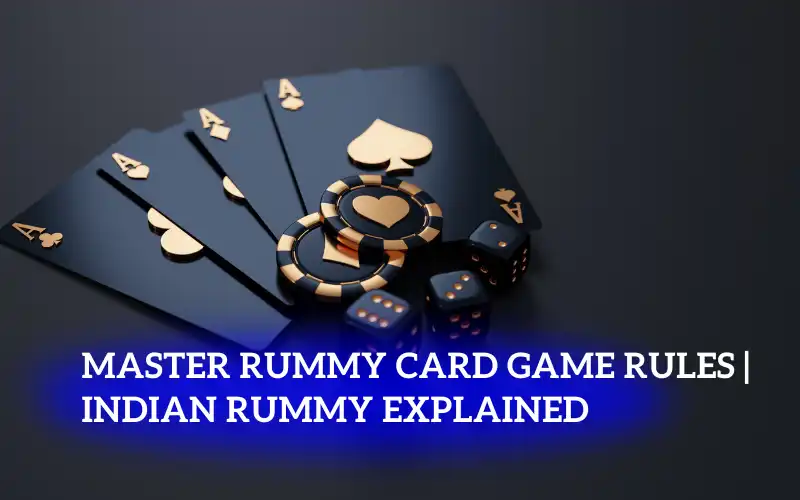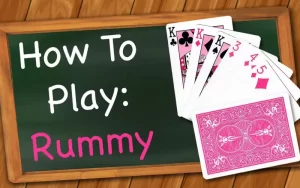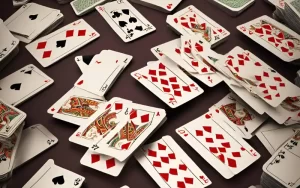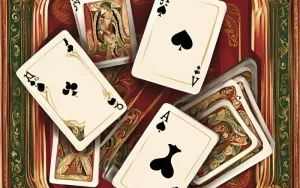Rummy is a popular card game enjoyed by millions across the globe. Whether you’re a casual player or a competitive enthusiast, understanding the rummy card game rules is crucial to success. This article will guide you through the essential rules, strategies, and tips for playing Rummy Card, with a particular focus on Indian Rummy, a variant loved by many. By the end of this article, you’ll be well-equipped to enjoy this classic game, whether you’re playing for fun or stakes.
What is Rummy?

Rummy is a group of matching-card games that require players to form sets or sequences from their hand of cards. The objective is to arrange all the cards in valid combinations and declare before your opponents do. The game is traditionally played with two decks of cards, including jokers, and can be enjoyed by 2 to 6 players.
Importance of Understanding Rummy Rules
Before diving into the game, it’s essential to understand the rummy card game rules. Knowing the rules not only helps in playing the game more effectively but also increases your chances of winning. Let’s explore the different aspects of Rummy, including how to play, the scoring system, and strategies that can give you an edge over your opponents.
Basic Rummy Card Game Rules
Setting Up the Game
Rummy is played with one or two standard decks of 52 cards, along with jokers. The number of decks used depends on the number of players:
- 2 to 4 players: One deck of 52 cards plus one joker.
- 5 to 6 players: Two decks of 52 cards plus two jokers.
Objective of the Game
The primary objective in Rummy is to arrange all your cards into valid sequences or sets. A sequence is a group of three or more consecutive cards of the same suit, while a set is a group of three or four cards of the same rank but different suits.
Dealing the Cards
At the beginning of the game, each player is dealt a specific number of cards:
- 2 players: 13 cards each.
- 3 to 4 players: 10 cards each.
- 5 to 6 players: 6 cards each.
The remaining cards are placed face down to form the draw pile, and the top card is placed face up to start the discard pile.
Joker and Its Role
In Rummy, jokers play a vital role. There are two types of jokers:
- Printed Joker: The joker card from the deck.
- Wild Joker: A randomly selected card from the deck that serves as a joker for that game.
Jokers can be used as substitutes for any card to complete a set or sequence. However, at least one pure sequence (without a joker) is mandatory for a valid declaration.
Indian Rummy Rules: A Popular Variant
Indian Rummy, also known as Paplu, is a popular variant of the Rummy card game. It is typically played with 13 cards and requires a combination of sequences and sets for a valid hand. Let’s delve into the specific Indian rummy rules.
Objective and Winning
The primary objective in Indian Rummy is to form at least two sequences, one of which must be a pure sequence. The remaining cards can be arranged into sets or sequences. The game ends when a player declares and shows valid combinations.
The Role of Jokers
Indian Rummy uses both printed and wild jokers. These jokers can be used to complete sequences or sets, but the game requires at least one pure sequence without any jokers.
Scoring in Indian Rummy
The scoring system in Indian Rummy is simple:
- The player who declares first with valid sequences and sets wins the game.
- The losing players’ scores are calculated based on the values of unarranged cards in their hand.
Here’s a quick look at the card values:
- Face cards (K, Q, J, 10): 10 points each.
- Number cards (2 to 9): Points equivalent to their face value.
- Ace: 10 points.
The winner gets 0 points, while the other players accumulate points based on their unarranged cards. The player with the lowest score at the end of the game wins.
Advanced Rummy Set Rules
Once you’re comfortable with the basic rummy card game rules, you can explore advanced strategies to improve your gameplay. Understanding the rummy set rules and mastering the art of forming sets and sequences can give you a competitive edge.
Forming a Pure Sequence
A pure sequence is a group of three or more consecutive cards of the same suit without any jokers. For example, a pure sequence could be 5-6-7 of hearts. Forming a pure sequence should be your top priority, as it is mandatory for a valid declaration.
Using Jokers Effectively
Jokers are versatile cards in Rummy, and knowing how to use them effectively can make or break your game. Here are some tips:
- Complete sets or impure sequences: Use jokers to complete sets or sequences where you’re missing one or more cards.
- Avoid joker dependency: While jokers are helpful, relying too much on them can be risky. Focus on forming pure sequences first.
Discarding Strategy
Your discard pile reveals a lot about your hand and strategy. Here are some tips for effective discarding:
- Avoid discarding middle cards: Cards like 5, 6, and 7 can be crucial in forming sequences. Avoid discarding them unless necessary.
- Observe opponents’ discards: Keep an eye on the cards your opponents discard to gauge their hand and strategy.
Winning Strategies for Rummy
Now that you’re familiar with the rummy card game rules and Indian rummy rules, let’s explore some strategies that can increase your chances of winning.
Prioritize Pure Sequences
As mentioned earlier, a pure sequence is essential for a valid declaration. Prioritize forming a pure sequence early in the game. Once you have a pure sequence, you can focus on creating other sets and sequences.
Manage Your Jokers
Jokers are powerful, but they should be used wisely. Instead of using jokers to complete a pure sequence, save them for other combinations. This way, you can maximize their value and increase your chances of a successful declaration.
Keep Track of Opponents’ Moves
Rummy is as much about observation as it is about strategy. Keep an eye on the cards your opponents are picking and discarding. This information can give you insights into their strategy and help you make informed decisions.
Discard High-Value Cards Early
High-value cards like face cards and aces can be a liability if left unarranged. If you don’t see an immediate possibility of forming a sequence or set with them, consider discarding them early to minimize your score if you lose.
Stay Flexible with Your Strategy
While it’s essential to have a strategy, it’s equally important to stay flexible. Rummy is a dynamic game, and the situation can change quickly. Be ready to adapt your strategy based on the cards you draw and the moves your opponents make.
Common Mistakes to Avoid in Rummy
Even experienced players can make mistakes that cost them the game. Here are some common pitfalls to watch out for:
Over-Reliance on Jokers
While jokers are useful, relying too much on them can be risky. Always aim to form a pure sequence first and use jokers strategically.
Holding on to High-Value Cards
As mentioned earlier, holding on to high-value cards like kings, queens, and aces for too long can increase your points if you lose. Discard them if they’re not contributing to a sequence or set.
Ignoring Opponents’ Moves
Pay attention to the cards your opponents pick and discard. Ignoring their moves can lead to missed opportunities and poor decision-making.
Declaring Prematurely
Premature declarations are a common mistake in Rummy. Before declaring, double-check your cards to ensure all combinations are valid. A premature declaration can result in a heavy penalty.
Conclusion
Rummy is a game of skill, strategy, and observation. By understanding the rummy card game rules, including the specific Indian rummy rules and rummy set rules, you can enhance your gameplay and increase your chances of winning. Remember to prioritize forming pure sequences, use jokers wisely, and stay flexible with your strategy. Avoid common mistakes like over-reliance on jokers and holding on to high-value cards for too long.
With practice and patience, you’ll find yourself becoming a more confident and successful Rummy player. So, gather your cards, invite your friends, and enjoy the timeless fun of the Rummy card game!







